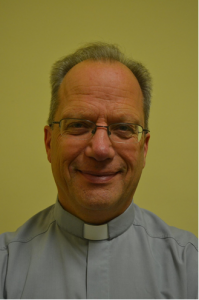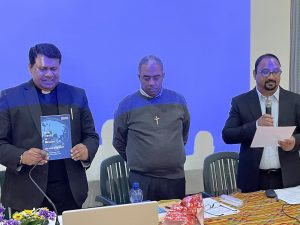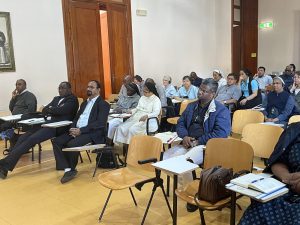 SEDOS has held twice a Mission Symposium, in 1969 and in 1989. It is was thus the right time to hold a new Mission Symposium thirty years later. Because of the Covid pandemic, we first opted to have it only as a book with different authors, but as we got used to give seminars online, the idea grew to have a five-day mission symposium and to ask the authors to present their paper online.
SEDOS has held twice a Mission Symposium, in 1969 and in 1989. It is was thus the right time to hold a new Mission Symposium thirty years later. Because of the Covid pandemic, we first opted to have it only as a book with different authors, but as we got used to give seminars online, the idea grew to have a five-day mission symposium and to ask the authors to present their paper online.
Because mission in still in a crisis, the idea was to the roots of Mission, namely the why, where, when, how, and so on. Fr. Jose Palakeel, MST, helped me in the beginning, and later on also Fr. Chris Chaplin, MSC, and Sr. Marie-Therese Robert, OLA, cooperated in the theological screening of the contributions. The whole SEDOS Executive Committee helped in finding the right people to wrote among their own members, and some from outside the SEDOS family.
The idea was to have the book ready by the seminar itself, but ORBIS BOOKS could only do it by spring this year, and then it still took it a half year longer as expected before the books could reach Rome. Also, the price is higher than expected, even when SEDOS has given a financial support in advance of 2.500 Euro to lower the price. We therefore offer the book at the author price for our members to help them at least. In fact, the whole initiative has been sponsored by SEDOS: the seminar was offered for free and the speakers were given a contribution for their paper. SEDOS wants to stimulate the global mission through its activities, and this symposium has been a mile point in its more than fifty years of existence.

Why is the book of great value for the mission of today? The first chapter makes clear the link between mission and evangelization. Some of our greater missiologist give their important input to understand the why and the what of mission correctly. The second chapter is about ways of doing mission. Here we have missionaries closer to us that reflect on the where, when, how, and who of mission. The last chapters give the floor to those missionaries in the field reflecting on the new trends in mission. It is especially here that Congregations will find some tools for mission: eg. Guidelines for when one does mission through the use of internet, an evaluation grid to see in how far a parish is really intercultural, how to dialogue with Muslims, Indi-genous or African religions, and so on. Some articles can be used for recollection purposes or for ongoing formation. In sum, the book is a great source for further reflection on mission today.
The conclusion of the Symposium can be found at the end of the book where we come up with mission that starts in the mind/heart of God, the mission Dei, with four foundations that count for all the ages: scripture, experience, Holy Spirit, and the Cry of the World, and the Four Emerging Themes from this Symposium: Synodality and Communion, Dignity and Human Fulfillment, Christ-Connectedness and Witness through Spirituality, and Holistic Approach and Unity.
To close, I like to give here special thanks to our translator, Miss Philippe Woodridge, who has gone through all those papers two or three times to make sure the English was correct. ORBIS BOOKS only had to take care of the editing aspect, which they did also nicely, in line with the former book on Trends in Mission which was though not the result of a symposium but a collection of talks given at different SEDOS seminars, a kind of SEDOS Readers Digest you can say.
We were very thankful also to Cardinal Tagle for his contribution. The Cardinal has pointed out among others the difficulty to find the balance between evangelization and mission, and as a consequence to find a proper name to the “missionaries”, that “strange species of Christians” as Fr. Aloysius Pieris calls them in his paper. Pope Francis also wished us all the best with our Symposium through a letter we received from Cardinal Pietro Parolin.
His Holiness asks us not to impose fixed cultural forms in doing mission, and encourages proposals and their implementation that reflect the nature of the people of “God all holy with a thousand faces”, and imparts his Apostolic Blessing to all the SEDOS members.
SEDOS indeed reflects these “thousand faces of God” through its multi- and inter-cultural living and mission in the world of today.



